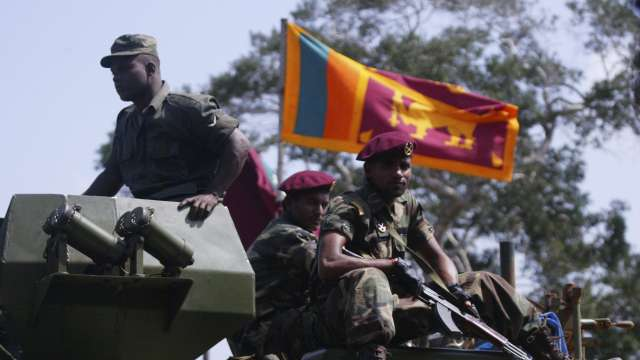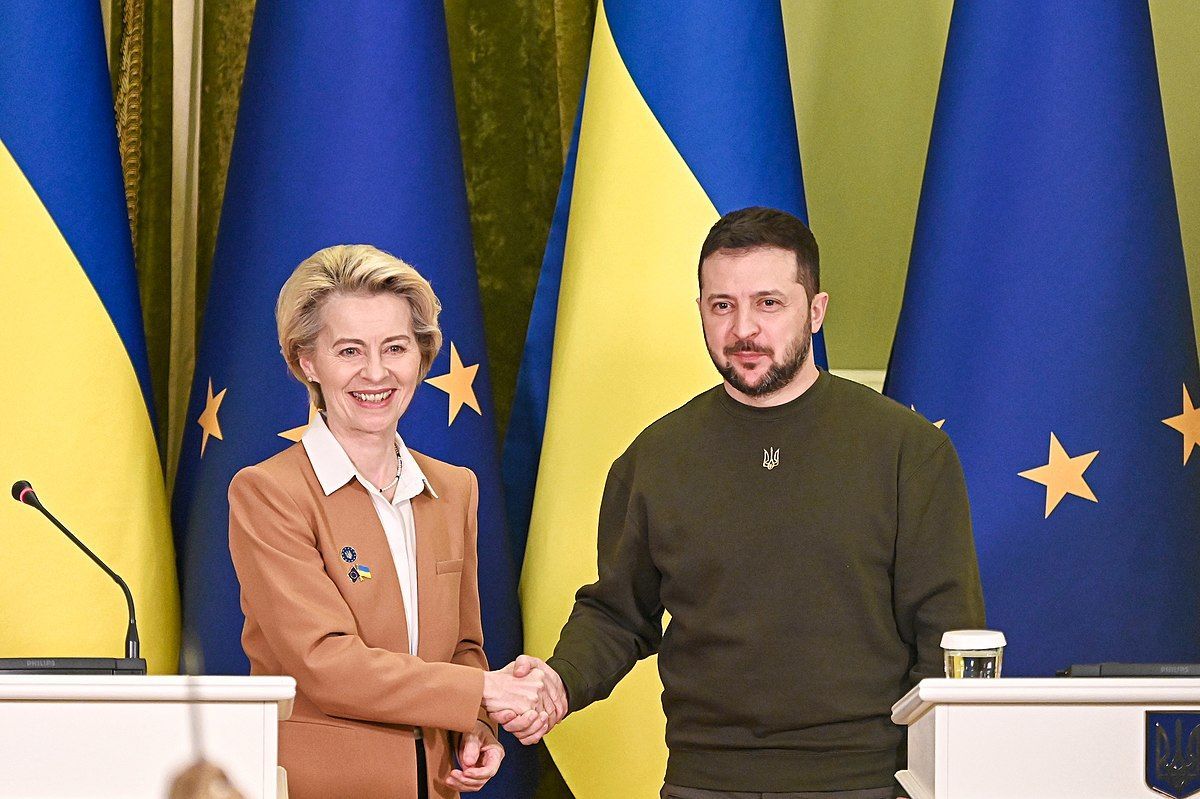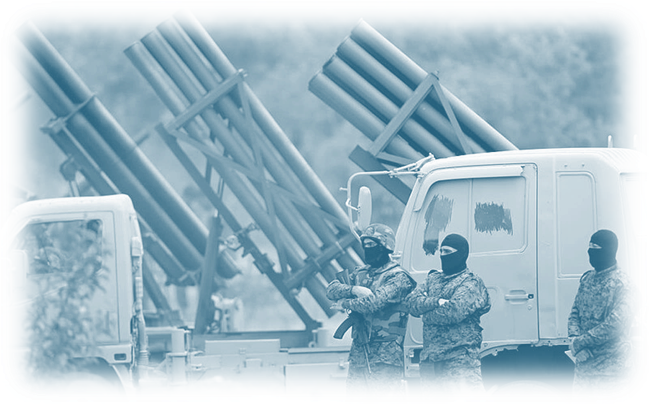5 August 2021
In 2008, the Norwegian-brokered Ceasefire Agreement between the Government of Sri Lanka and the Liberation Tigers of Tamil Eelam (LITTE) collapsed. The reawakened civil war was brought to a bloody conclusion a year later with the crushing defeat of the LITTE. What prevented Norway's mediation efforts from becoming a success?
Full paper also available as a PDF:
1. Introduction
Sri Lanka has suffered one of Asia’s most intractable and bloodiest civil wars. The abolition in 2008 of the Ceasefire Agreement (CFA) brokered by Norway marked the last attempt to settle the conflict between the Government of Sri Lanka (GoSL) and the Liberation Tigers of Tamil Eelam (LTTE). Norway had been involved in the Sri Lankan conflict since 1999 when President Kumaratunga announced Norway’s status as facilitator (Höglund and Svensson 2009, p.176). But when on 17 May 2009 Norway received the news that the Rajapaksa government was going to throw a final deadly offensive against the LTTE, it was too late to do anything (Nissen 2018, p.537). All the LTTE leaders died, together with 30,000 civilians (ibid). Norway’s conflict management approach received both praise and criticism over the years, but ultimately, it failed to deliver a stable peace.
Thus, while considering the intricated nature of the GoSL-LTTE conflict, this essay will argue that third parties’ conflict management had a significant impact on peace failure. Specifically, it will make two claims: 1) Norway’s “weak mediator” status disadvantaged it from the beginning. The incapacity to coordinate with the other States-donors further dismantled the progress achieved with the CFA. 2) Norway’s impartiality de facto hid a bias towards the LTTE. This fact undermined its reputation and further enraged the parties “left out of the peace process”, which acted as spoilers.
This paper will be divided in the following way: first, it will build a theoretical framework which outlines the concepts of “power-leverage” and “bias” in mediation. Second, it will analyse Norway’s limits as a mediator and its torn relationship with the US. Third, it will explore how Norway’s “partiality” towards the LTTE “spoiled” the peace process. Finally, it will examine how Norway could have approached the mediation process and then conclude.
1. Theoretical framework:
1.1. Mediators and Leverage
Mediation can be defined as a “non-coercive and voluntary form of conflict management” (Bercovitch 2005), which makes use of third parties to assist the disputants in reaching a voluntary agreement (Raymond and Kegley 1985). To be effective, third-parties must hold a form of leverage which can steer inflexible sides towards a negotiated solution, motivate them 2 to stand by the rules and respect the agreement (Vuković 2013, p. 24; Groeneveld-Savisaar and Vuković 2011, p. 1). This “power” is exemplified by the concepts of “strategic strength” and “tactical strength” (Carnevale 2002, in Vuković 2013, p. 25). The first consists of what the mediator “brings to the table”, and involves different types of social power (i.e., coercive and reward power); while the latter refers to the mediator’s tactics and ability to follow procedures (Vuković 2013, p. 25).
Coercive and reward powers- i.e., “carrots and sticks” – are considered essential tools when mediating between states and terrorist organisations, such as the LTTE. But Beardsley (2009, p. 277) claims that mediation “without leverage” can perform better than more manipulative strategies. Even though “power mediators”, such as the US, can broker peace agreements more quickly than “pure mediators” like Norway, “mediators without leverage” tend to deliver settlements which include territorial and political power-sharing (Vuković 2013, p.27). Fighting parties might prefer weak mediators due to a “supply-side” problem (ibid p.274), or because mediation is used for “insincere motives” – i.e., as a stalling tactic to regroup their forces.
Strong and weak mediators often work together through multi-party mediation – conveniently for a weak mediator because it allows borrowing leverage from the “mediator with muscle”, as Norway was aiming to do with the US (Groeneveld-Savisaar and Vuković 2011, p.10). Still, during multi-party mediations, intermediaries need to “harmonise” their interests (Vuković 2019, p.77). They must find convergence through cooperation and coordinate their activities to achieve maximum effectiveness because a lack of shared understanding can send mixed signals, reduce the mediators’ credibility, and disrupt the peace process (ibid, p. 77).
1.2. Neutrality, impartiality, and Bias in mediation
Mediators’ behaviour has a clear impact on the negotiation process. Anam (2020, p. 295) argues that the principles of neutrality and impartiality are strongly associated with effective mediation. Being “neutral” means that mediators should not manipulate the content and outcome of the mediation process, while an “impartial” mediator should abstain from partisan behaviour (ibid, p. 296). Many studies reveal that mediators must be impartial to be successful since unbiased third-parties can gain trust more easily (Young 1967, p. 81). Others argue that biased third parties can be more effective in the bargaining process by mitigating commitment problems – while tendentially holding more leverage than impartial parties (Gent and Shannon 3 2011, p. 126). Still, neutrality can be a priori hard to maintain in asymmetrical conflicts like the GoSL and LTTE. In those cases, mediators either follow an “even-handed” strategy, where they equally engage with both parties, or an “equalising strategy”, where they seek to counterbalance the situation by strengthening the weaker party (Höglund and Svensson 2008, p. 342). However, in both instances, the mediator can still be subject to criticism, as was the case with Norway.
2. Norway in the LTTE-GoSL conflict: the limits of being a weak mediator
The Sri-Lankan conflict had followed a vicious cycle of broken promises, trust issues and warfare resumption until the end of 1990s (Paramathan 2007, p.16). While there were stable periods when the GoSL and the LTTE negotiated temporary ceasefire, the warring parties soon returned to fighting (ibid). Thus, after several mediation failures (e.g., 1957 BandaranaikeChelvanayakam Pact; 1965 Senanayake-Chelvanayakam Pact; 1985 Thimpu Talks; 1987 IndoSri Lankan Accord, 1989 and 1995 Talks), Norwegian mediation efforts started in 1999 (Bouffard and Carment 2006, p.167-168). When they intervened, a mutually hurtful stalemate had trapped the fighting parties, and a military solution seemed unplausible (Paramathan 2007, p. 16).
Norway was by no means identified as a “great power”, but it had made “world peace” a cornerstone of its foreign policy, establishing a reputation for being a “peaceful nation” (Fowsar 2020, p. 33). Norway’s internal approach was rooted in tolerance and accommodation, and its involvement in several peace processes had given it invaluable conflict management experience (ibid, p. 34). Norway had good relationships with the main international actors – and possessed both economic and human resources to assist the fighting parties (Øvstegård 2008, p. 33). Most importantly, it was not burdened with the connotations of a past as a “colonial power”, which increased its legitimacy to mediate the conflict (ibid). The acceptance of Norwegian mediation was also a compromise between the parties’ interests (Höglund and Svensson 2009, p. 181). Indeed, as an actor seeking international recognition and legitimacy, the LTTE would not have accepted a less official actor – i.e., an NGO – for the conflict mediation (ibid). On the other hand, the government would not have taken a high-stake actor like the UN, since it would attracted too much attention. Thus, as a “weak mediator”, Norway became the perfect candidate (ibid).
Norway’s role consisted primarily of facilitation, which ranged from smoothening the communication between the parties to drafting the CFA in 2001 and the Oslo Declaration (Vuković 2013, p. 202). The CFA had a significant impact on the GoSL-LTTE relationship: first, establishing the Sri-Lankan Monitoring Mission (SLMM) to implement a supervised ceasefire. Second, it brought the two sides to agree on a federal option within which the Tamils would have gained self-determination in their occupied areas (Groeneveld-Savisaar and Vukovic 2011, p.109). As a weak mediator, Norway had taken a significant step forward in the obtainment of peace. However, Norway made its first mistake when it decided to enlarge the safety-net and involve the United States, the EU and Japan as co-chairs of the peace process (ibid, p. 204).
Norway was aware of being a low-key tactical mediator, and it needed powers like the US to add strategic strength and play “carrot and sticks”. However, the plan was flawed in that Norwegians and Americans had a very different view of the GoSL-LTTE conflict. Indeed, the US had labelled the LTTE as a terrorist organisation, whereas Norway had decided not to designate them (Nissen 2018, p.524). The Norwegian approach was to treat impartially and equally both the government and LTTE because they hoped that if the LTTE had gained more legitimacy, they would have opened a fertile negotiation window (ibid, p.525). However, the US approach towards the LTTE was to isolate and delegitimise the Tigers and push all the allies to do the same – in contradiction with the Norwegian policy (ibid).
Furthermore, the US was militarily supporting the GoSL while denying direct talks with the LTTE due to their terrorist denomination (Groeneveld-Savisaar and Vukovic 2011, p. 20). 21). The US had no strategic interest in Sri Lanka, and while it formally remained engaged in the peace process, its involvement did not go beyond condemnation of hostilities (ibid, p.22). The 2003 Washington conference was the last stroke: the American legal constraints prevented the Tigers from participating in the forum, and the LTTE decide to make a U-turn and withdraw from the peace talks (Nissen 2018, p. 529). The LTTE blamed the Norwegians for allowing the Americans to hold the conference in Washington despite the ban, but while the Tigers were rightfully “upset”, Norway needed the US financial and political support to strengthen the peace process (ibid).
The lack of coordination among co-chairs quickened the peace process’s deterioration, but Beardsley (2009) claimed that the Norwegian mediation was doomed to fail from the beginning. Indeed, mediation by weak intermediaries likely hides “insincere motives” and 5 “stalling tactics”, and both sides presumably used the Norwegian mediation for means other than peace (ibid, p. 283). The GoSL feared that the LTTE was building a rudimentary air force. Thus, when it was clear that the Tigers were gaining a considerable advantage from the ceasefire, the GoSL ended the CFA (ibid). As a fact, the GoSL was “painlessly” able to resume warfare since the Norwegians held no coercive power – and the LTTE would have acted similarly if they had suspected that the government was acquiring too much strength (ibid).
De facto, Norway’s “weak mediator” status put the intermediary in a disadvantage due to the fighting parties’ devious objectives. And its decision to internationalise the conflict – to “borrow leverage” – ended up having a detrimental effect on the peace process due to the lack of coordination among co-chairs. Thus, while its weak status hardened its position, accusations of “partiality” towards the LTTE also put the Sinhalese community against it, making them spoilers of the peace process.
3. The limits of Bias in the Sri Lankan context
The Norwegians had entered the peace process playing the role of neutral advisors and observers. They claimed to have no intention of imposing “judgement decisions” on either side (Bullion 2013, p. 82) and they characterised their approach as “credible, impartial, consistent and confidential” (Höglund and Svensson 2008, p.347). However, their behaviour turned out to be neutral only towards the peace agreement, showing a bias in favour of the LTTE. In fact, despite the 2001 CFA, the LTTE continued violating the ceasefire by carrying illegal arms and acting with hostility (ibid., p. 350). They committed 96 % of the violations, but Norway and the SLMM turned a blind eye to these infringements, afraid that the LTTE would have left the peace table (ibid). Undeniably, Norway had a close relationship with the LTTE, thanks to the link that Solheim – the Norwegian mediator – had established with Balasingham, the LTTE spokesperson (Øvstegård 2008, p. 42). Balasingham had fallen very sick and, in need of a kidney transplant, Solheim ensured that he received the necessary treatment (ibid). This event put Solheim in the inner circles of the LTTE. And since impartiality is essentially a matter of perception, Norway became a “biased mediator” in the Sinhalese community’s eyes (ibid).
About 47.5% of the Sri Lankan public believed that the Norwegians were partial to the LTTE (Dickwella 2013, p.7), and a series of incidents in 2003, involving the LTTE’s fleet (the Sea Tigers) deepened concerns. De facto, the CFA did not regulate the Tiger’s maritime capacities, 6 and while the GoSL was reluctant to show any sign of acceptance, the LTTE looked for formal recognition (Höglund and Svensson 2008, p. 351-352). To respond to these incidents, Norway and the SLMM proposed that the GoSL recognised the Sea Tigers as a naval unit and allowed the LTTE to train (ibid, p. 352). While the mediators aimed to strengthen both the CFA and sea safety, critics argued that SLMM had overstepped and undermined Sri Lanka’s sovereignty by seeking to amend the CFA (ibid).
There was a transparent form of asymmetry between the LTTE and the government’s forces, which the Norwegians tried to balance by empowering the organisation. However, this approach – paired with the even-handed strategy of equalising the LTTE to the GoSL – soon became detrimental. The Sinhalese community considered it outrageous that the Norwegians treated the Tigers – i.e., a “terrorist organisation” – like a legitimate actor (Destradi and Vüellers 2012, p. 15). Their sentiments intensified across time, strengthening the discourse of the nationalist-Marxists and other hardliners, who organised mass protests against the LTTE (ibid). Still, the Norwegians mistakenly dismissed the extremists and neglected to handle the people left out of the peace process – i.e., the President, the elites, the non-LTTE Tamils, the Muslims (Vuković 2013, p. 213). Since Norway made no concrete steps to soften the criticisms, its reputation kept worsening. Eventually, Sri Lanka elected as President the hardliner Rajapaksa who assumed a more rigid attitude towards the LTTE and ultimately rejected the idea of federalism (Nissen 2018, p. 534). Thus, while Rajapaksa affirmed to be open to negotiating with the Tigers, he officially withdrew from the CFA with the LTTE in 2008 - disrupting all the efforts that Norway had made in the previous years (ibid, p.536).
4. The Norwegian approach: what went wrong?
Ultimately, Norway was limited by its status as “a weak mediator” and perceived bias towards the LTTE which created the conditions for a calamitous failure. Analysing Norway’s conflict management approach, it can be argued that its first mistake was the internationalisation of the peace process. Solheim was aware that Norway was not “a mediator with muscle” and the idea of involving great powers – like the US – would have been a smart move if the United States had shared Norwegian views. Instead, the strongest co-chair undermined the Norwegian efforts by isolating the LTTE and pushing its allies to denominate the Tigers as a “terrorist organisation” (Nissen 2018, p.534). The United States had the role of “bad cop” in the negotiation process – which was acceptable only until the “good cop” (the EU) also designated 7 the LTTE as a “terrorist” group (Schiff 2014, p. 111). At that point, the Tigers started to feel like an international outcast (ibid).
When the LTTE saw their access denied to the 2003 Washington Conference, its remaining trust towards the peace process was finally eroded. Norway was acting as a pure mediator – but it had been successful up to that moment. The “insincere motives” that encouraged the fighting parties to negotiate peace would have probably endangered the talks later (Beardsley 2009). But still, the involvement of reluctant co-chairs accelerated the disruption of the peace process. De facto, Norway would have managed the conflict more effectively by working unilaterally, given that multi-party mediation only undermined – rather than strengthened – the Norwegian progress, due to a lack of cooperation and coordination among donors.
But the internationalisation of the conflict was not Norway’s only mistake. Indeed, Norway argued to be a neutral observer, but de facto it was partial towards the LTTE. Theoretically, biased intermediaries can be more effective than neutral mediators because they are more invested in the peace process and can reduce the lack of trust and commitment issues between the government and the group (Gent and Shannon 2011, p. 126). However, Norway worked within a complicated domestic situation, where intra-party division politically separated the PM and the President. Indeed, the GoSL had to deal both with the Tigers – seen with suspicion due to their ceasefire breaches and Norway’s partial behaviour – and with the President, who repeatedly tried to undermine the PM’s work (Schiff 2014, p. 107). Therefore, the LTTE saw the PM as someone willing but unable to implement the ceasefire due to the internal parties’ divergences (ibid).
Due to these complexities, Norway could not create any level of “trust” between the two sides, which is usually one of the “advantages” of biased mediators. Additionally, Norway “neglected” the sentiment of discontent that the Sinhalese community was feeling towards the CFA and Solheim. Norway did not actively try to improve its reputation or defend itself from the critiques of “bias”, allowing the hardliners’ emotions to grow stronger among the population (Vuković 2013, p. 213). Norway should have acted promptly by expanding the peace process, involving the president, and creating a positive relationship with the Sinhalese community. The grievances that these communities felt towards the LTTE and Norway partially spoiled the peace process. And if Norway had emphasised “greater inclusion” and “trust-building” as pillars of its mediation, the Sri Lankan peace process’ outcome might have also been different.
5. Conclusion
Norway was selected as a mediator for its credibility, neutrality, and its efforts in peacebuilding. It was aware of being a “weak mediator”, but it had managed to facilitate the communication between the warring sides, achieving the historical Ceasefire Agreement (2001) which contemplated the idea of federalism.
However, Norway made the mistake of internationalising the GoSL-LTTE conflict, involving state-parties that undermined the Norwegian efforts. Multi-party mediation failed due to the lack of coordination among the donors, and the mixed signals sent to the fighting parties. These mixed signals were also due to Norway’s behaviour. Indeed, its strong link with the LTTE created a biased mediator image in the Sinhalese community’s eyes. Norway was committed towards the CFA, but by limiting the negotiation process to two parties and ignoring the criticisms of partiality received by the excluded groups, it allowed the President and the hardliners to become spoilers of the peace process. Greater inclusion of the community, trustbuilding and “accurate” selection of suitable donors could have de facto avoided a similar outcome.
Thus, a combination of uncoordinated states-parties, no trust, lack of strategic power, and neglected spoilers effectively caused the failure of the Sri Lankan peace process.
Bibliography
Anam, S. 2020. Neutrality in Conflict Mediation Process. Dauliyah Journal. Vol. 5, No. 2. DOI: http://dx.doi.org/10.21111/dauliyah.v5i2.4649
Bercovitch, J. 2005. Mediation in the Most Resistant Cases in Crocker C.A., Hampson F.O, and Aall P.R. (Ed.), Grasping the Nettle: Analyzing Cases of Intractable Conflict, United States Institute of Pease Press, Washington D.C. pp. 99-121.
Beardsley, K. 2009. Intervention Without Leverage: Explaining the Prevalence of Weak Mediators, International Interactions. Vol. 35, No. 3, pp. 272-297, DOI: 10.1080/03050620903084547
Bouffard, S., and Carment, D. 2006. The Sri Lanka Peace Process: A Critical Review. Journal of South Asian Development, Vol. 1, No. 2, pp. 151-177 DOI: 10.1177/097317410600100201
Bullion, A. 2001. Norway and the Peace Process in Sri Lanka. Civil Wars. Vol. 4, No. 3, pp.70-92
Destradi, S. and Vüellers, J.V. 2012. The Consequences of Failed Mediation in Civil Wars: Assessing the Sri Lankan Case. GIGA WP, No. 202
Dickwella, W.K.R. 2013. Analyzing the Dynamics of Norwegian Mediation: Lessons from Sri Lanka. International Journal of Education and Research. Vol. 1, No. 6, pp. 1-12
Fowsar, M.A.M. 2020. Third-Party Mediation in Sri Lanka’s Peace Attempts: A study on the Role of Norwegian Mediation. Journal of Politics and Law. Vol. 13, No. 3, pp. 30-37
Gent, S. and Shannon, M. 2011. Bias and the Effectiveness of Third-Party Conflict Management Mechanisms. Conflict Management and Peace Science. Vol. 28, pp. 124-144. 10.1177/0738894210396774
Groeneveld-Savisaar, M. and Vuković S. 2011. “Terror, Muscle and Negotiation: Failure of Multiparty Mediation in Sri Lanka.” In Engaging Extremists: Trade-Offs, Timing, and Diplomacy, ed. I. William Zartman and Guy Olivier Faure, pp. 105-135. Washington: United States Institute of Peace Press
Hoglund, K and Svensson, I. 2008. Damned if you do, and damned if you don‘t: Nordic involvement and images of third-party neutrality in Sri Lanka’. International Negotiation Vol. 13, No. 3, pp. 341-364
Höglund, K. and Svensson, I. 2009. Mediating between tigers and lions: Norwegian peace diplomacy in Sri Lanka's civil war. Contemporary South Asia. Vol. 17, No. 2, pp. 175-191, DOI: 10.1080/09584930902870792
Nissen, A. 2018. Troublesome Peace Making: How American Views on Terrorism Affected Norwegian Mediation in Sri Lanka, 2000–2009, Diplomacy & Statecraft, Vol. 29, No.3, pp. 522-542, DOI: 10.1080/09592296.2018.1491450
Paramathan, M. 2007. Peace Negotiations of Sri Lankan Conflict in 2000-2006: the Ceasefire Agreement Facilitated by Norway is at Stake. Master Thesis. Jönköping International Business School
Raymond, G. and Kegley, C. 1985. “Third Party Mediation and International Norms: A Test of Two Models”, Conflict Management and Peace Science, Vol. 9, No. 1, pp. 33-52
Schiff, A. 2014. On Success and Failure: Readiness Theory and the Aceh and Sri Lanka Peace Processes. International Negotiation, Vol. 10, pp. 89-126
Vuković, S. 2013. Analysis of multiparty mediation process. Doctoral Thesis, Universiteit Leiden
Vuković, S.2019. International Multiparty Mediation: Prospects for a Coordinated Effort. Global Policy, Vol. 10, No. 2. Special Issue Article
Young, O. R. 1967. The Intermediaries: Third Parties in International Crises. Princeton, NJ: Princeton University Press
Øvstegård, R. 2008. Implications of Norway’s Role as peacemaker in Sri Lanka. Master Thesis. Norwegian University of Life Science.











